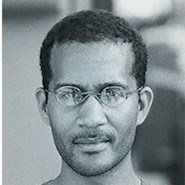By T.R. Witcher
San Francisco is famous for its dense, low-to-ground urban ambiance, which feels, among American cities, almost European. Yet its most famous high-rise is one of the boldest skyscrapers of the 20th century. Built in 1972, the 853 ft tall Transamerica Pyramid, designed by architect William Pereira, presents a distinct silhouette — a tall and slender pyramid form accented by two shoulderlike wings that jut from its narrow upper floors (these support an elevator shaft and stairs). Clad in white quartz, studded with more than 3,000 narrow windows, and capped with a spire that glows at night, Transamerica remains a distinctive skyscraper, both ambitious and restrained. It is also part of a three-building complex.
In 2020, real estate development company SHVO purchased the three-building Transamerica Pyramid Center and hired London-based Foster + Partners as the design architect to revitalize the iconic structure. (The Huntsman Architectural Group is the architect of record for the project.) The $250 million renovation, currently underway, will be the most significant in the building’s history.
According to Foster + Partners, which responded to several questions about the project via email, the ambitious renovation will “modernize the building’s interior, reconfiguring the lobby and amenity levels on upper floors.” Those amenity levels, meant to evoke upscale living spaces, include meeting rooms, a fitness center, lounge, and sky bar.
SHVO is also renovating Transamerica’s two sister buildings, 505 Sansome Street (known as Two Transamerica, also designed by Pereira) and 545 Sansome (known as Three Transamerica). The project will also improve Transamerica Redwood Park, a half-acre garden space at the base of the pyramid, which connects all three buildings.
A challenging lobby space
Architects at Foster + Partners have taken cues from “the Pyramid’s unique structural geometry and scale” by restoring the building’s historic lobby, “celebrating the original architecture by exposing the beams and structural cross bracing in the arrival area and bringing the existing iconic colonnade inside.”
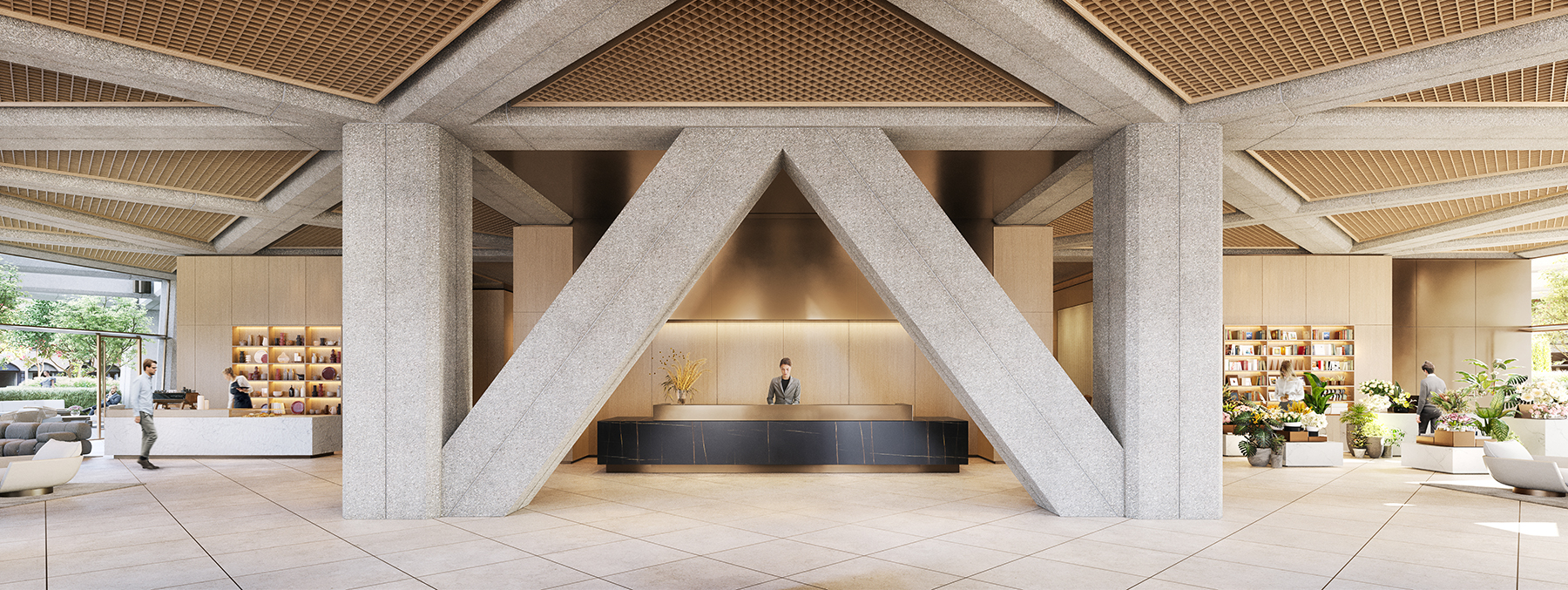
Engineering the new lobby was challenging — both the structural and seismic systems are very robust. The building’s original lobby was actually two spaces, divided by an enclosed egress stair, utility, and smoke shaft running the height of the building and housing the building’s main electrical and plumbing lines, according to Robert G. Pekelnicky, P.E., S.E., F.SEI, M.ASCE, a senior principal at Degenkolb Engineers, a San Francisco-based structural and earthquake engineering consulting firm that was the structural engineering firm of record for the multifaceted project. Pekelnicky is the firm’s principal in charge for its work at the Transamerica Pyramid Center and the structural engineer of record for several of the firm’s sub-projects on the site.
Foster + Partners’ vision was to create a single grand lobby, a plan that, says Pekelnicky, “required us to relocate the exit stair and reengineer previously modified floor framing that had been put in to support an escalator that was later abandoned in a 2002 renovation.”
The plan also involves building two new elevators and a monumental stair — which need to be situated between two existing moment frame beams in the lobby space. “We couldn’t remove or alter either of the two moment frame beams because they are part of the seismic system for the building,” says Pekelnicky. This made space tight. In part, this was because “when you engineer stairs and elevators in California and other high-seismic regions, you find you need framing that is larger than what you would need east of Lake Tahoe,” he says.
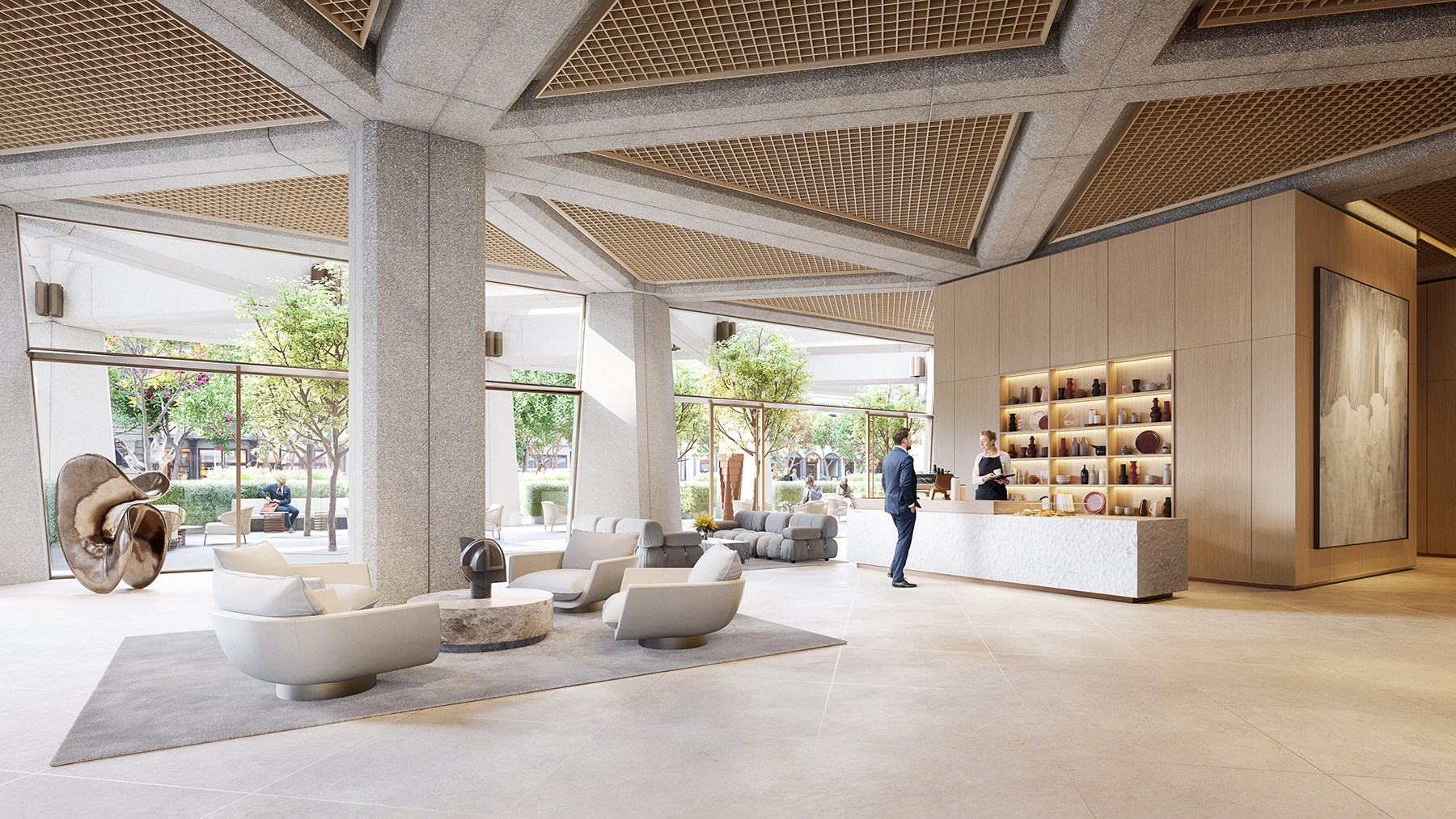
Degenkolb used building information modeling software to locate and select structural members that were unusual enough in shape to fit the tight geometries but still easily accessible from suppliers. Laura Weyl, P.E., S.E., LEED AP, is an associate at Degenkolb who is the project manager for much of the firm’s work at the center and the structural engineer of record for several of the sub-projects. She notes that “the monumental stair also features a hanging transfer platform between the first and second floor, allowing the stair additional gravity supports without adding columns. This was necessary to reduce the stringer sizes to fit between the elevator shafts while maintaining an acceptable level of vibration on the long run of these new stairs.”
Upper floor renovations
On the upper floors, the renovation will repurpose former office space for the more dynamic activity of fitness centers — which create “rhythmic excitation” from different workout machines and weightlifting exercises. These excitations cause vibrations in the framing that could make the floors uncomfortably bouncy. Degenkolb worked closely with Arup, the vibration and acoustical consultant, to strengthen the framing to support elevated floors with vibration isolation.
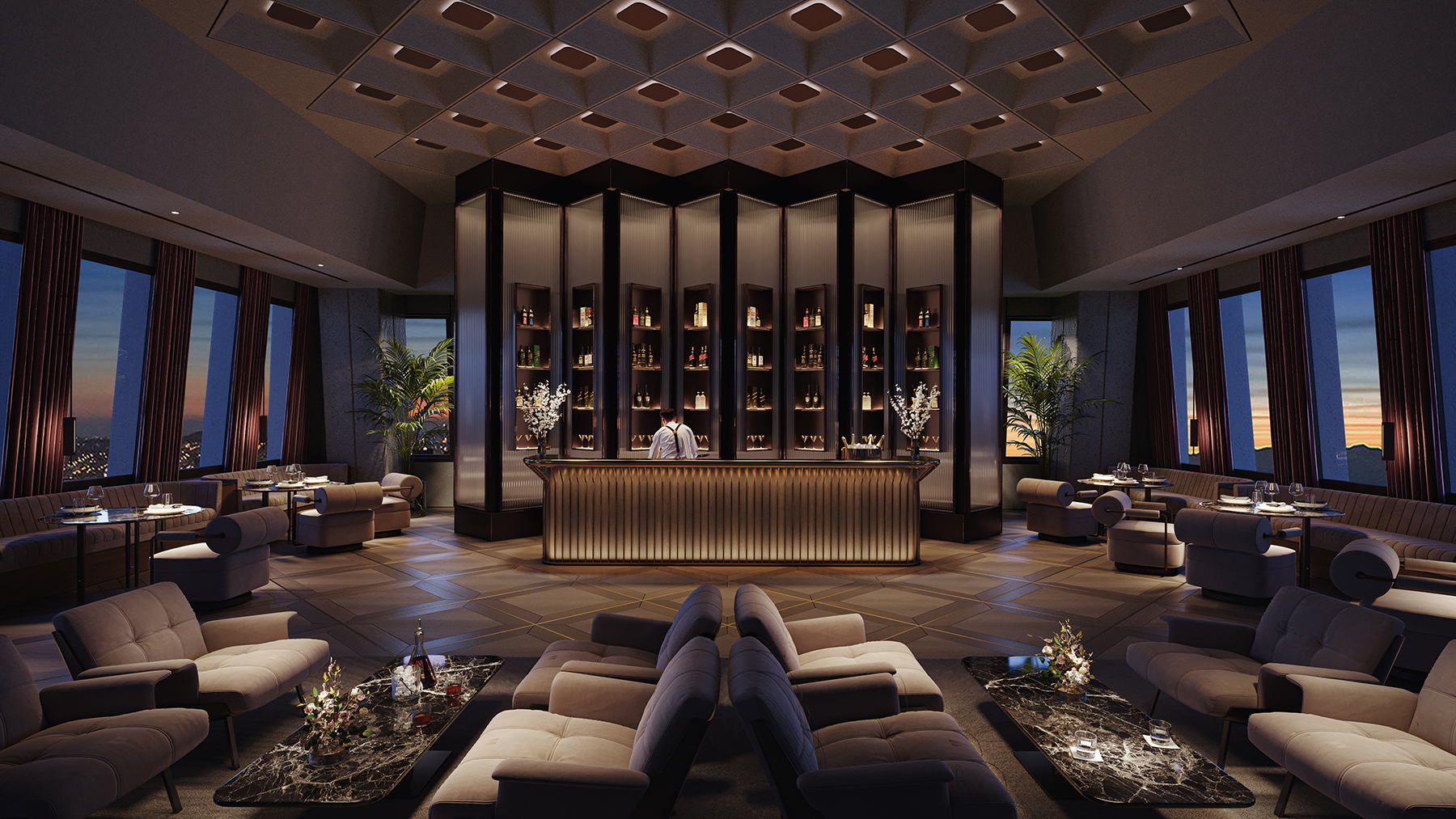
Transamerica’s small top floor — just 3,000 sq ft in area — was a conference floor that is being renovated into a sky bar. In the original configuration, there was an egress stair right in the middle of the floor, but architects wanted to remove the stair, which “required a lot of complicated framing challenges,” says Pekelnicky. “The floor area is pretty small. Where do you fit code-compliant exit stairs? How do you lay out that stair so you’re not creating too great a disruption on the 47th floor?”
According to Weyl, “it proved challenging to fit a new stair away from the center of the floor plate, so a portion of the existing, steeper lower stair run was maintained and coupled into the first of three midheight landings. The new conforming stair snakes south, then east, and then north, changing stringer shapes and layouts at nearly each landing to avoid existing constraints and head-height requirements. The stair finally ascends a long straight run up to the bar with a tapered cantilevered slab sneaking overhead for egress, as framing depths could not be accommodated.”
Restoring the redwoods
The Transamerica project will also overhaul the redwood park to the east of the tower’s base and adjacent to the other two Transamerica buildings. According to nonprofit, Washington, D.C.-based The Cultural Landscape Foundation, Transamerica Redwood Park was designed in 1969 by landscape architect Thomas Galli and planted “with 80 mature redwood trees brought in from the Santa Cruz Mountains.” Fifty of the trees remain. The renovation will restore all the redwoods and surround them with new plum trees, part of the original design, and rhododendrons. The park will eventually be programmed with new activities, including events connected to the plants’ blooming season.
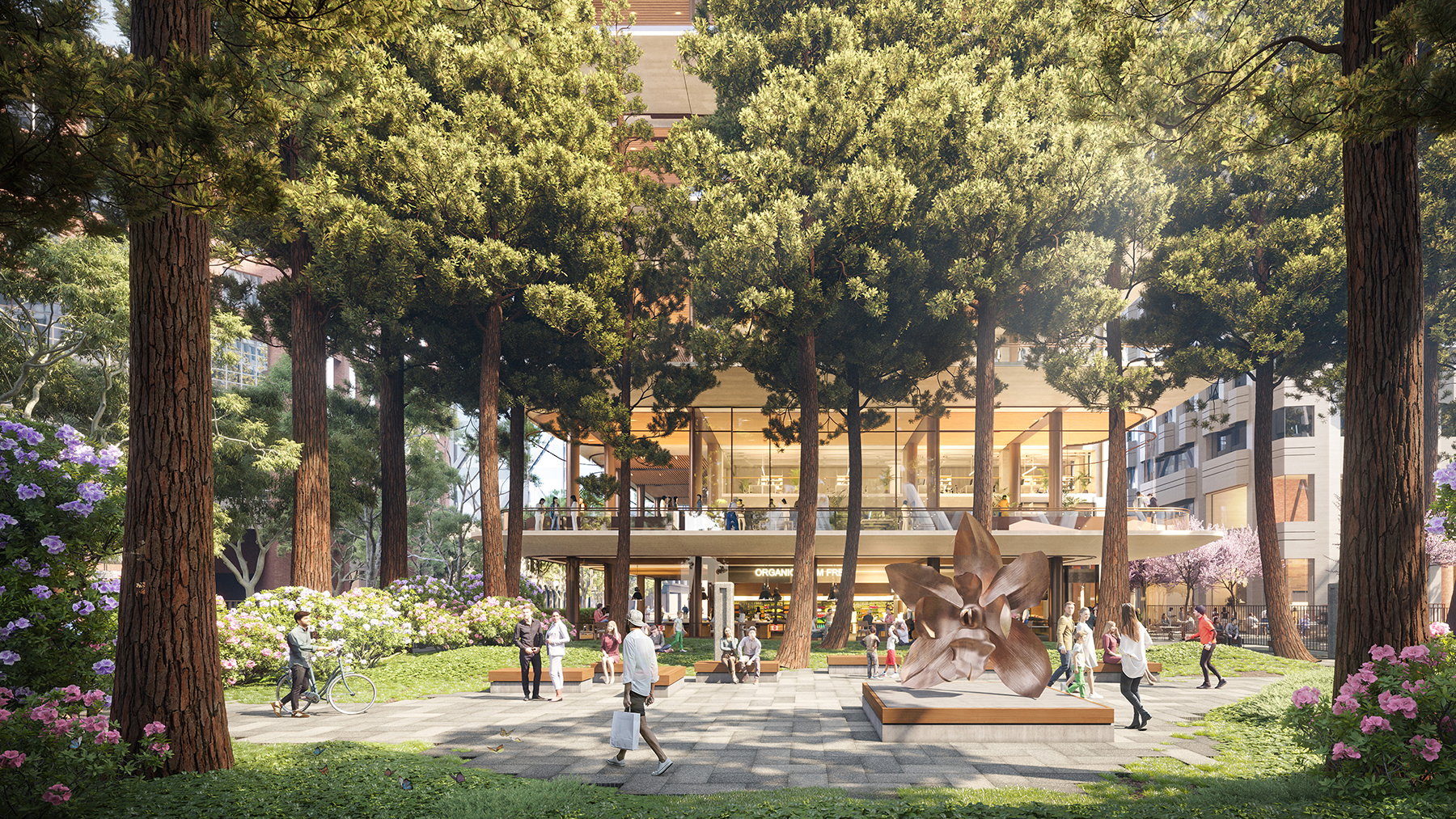
A pair of concrete pedestrian access ramps will lead visitors from the building’s first floor down to the park space. But engineers couldn’t use conventional footings, which could have harmed or killed the sophisticated root structure of the redwoods. So Degenkolb worked with geotechnical engineer Langan to support the elevated ramps with carefully positioned piles, meaning the ramps will be floating over the redwood park, though they appear to be immersed in the planting.
Outside, Degenkolb engineers also developed a load map of the existing conditions on the plaza, which is located to the north, west, and south of the tower. The plaza is located on an elevated floor that sits over the upper garage level below. The load map provided an understanding of how much saturated soil in planters the plaza’s framing could support without needing to be strengthened.
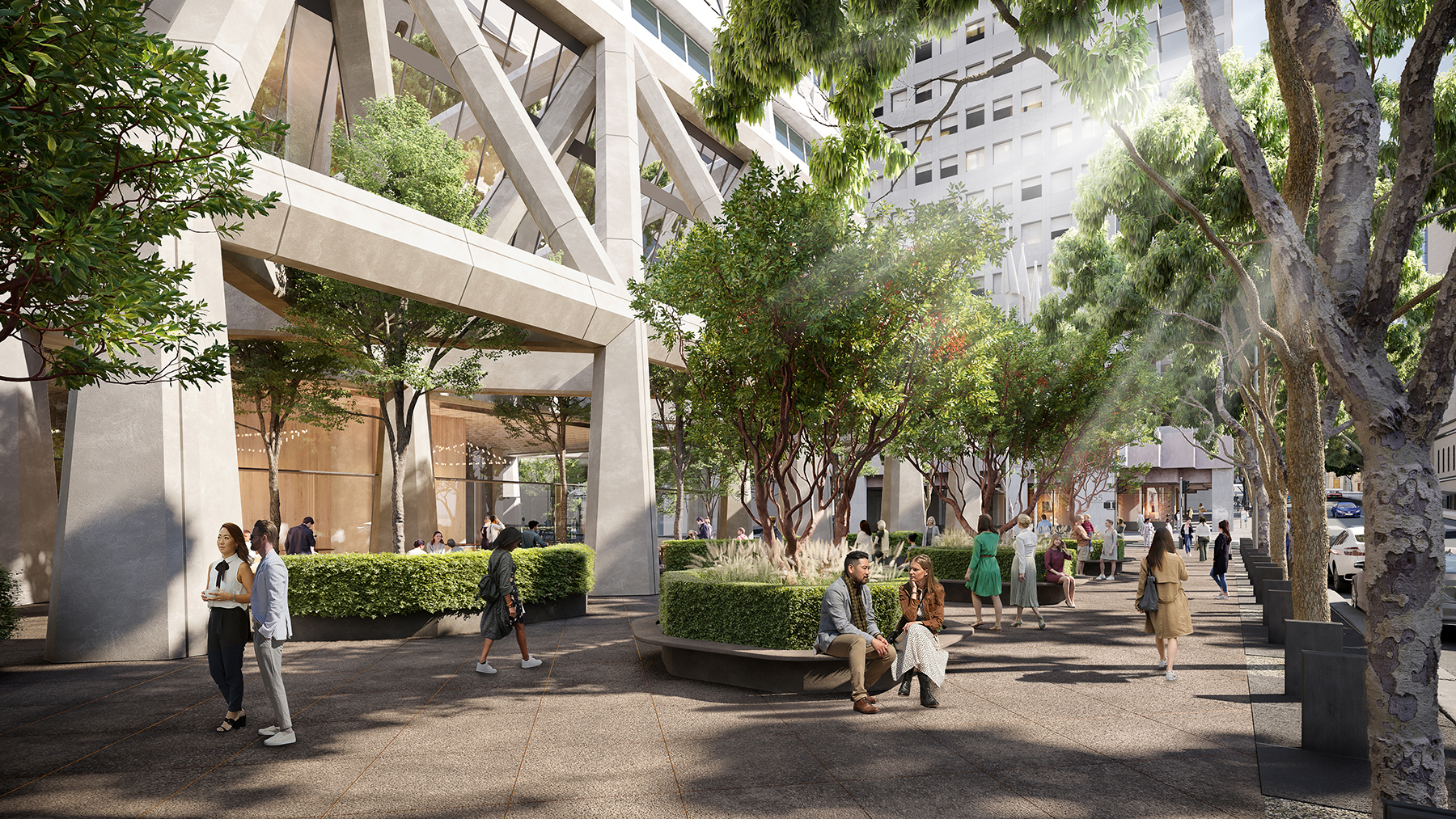
Select areas will be strengthened for some heavier new planters, including deep planter boxes that are recessed over 3 ft into the plaza slab to allow trees to appear to grow out of the plaza.
Finally, the project will restore the art deco 545 Sansome building, which features, according to Foster + Partners, an “an innovative use of cast-in-place concrete to support utilitarian industrial requirements.” New retail spaces will wrap around three sides of the building, and the building’s floor plates will be extended toward the park to create double-height office spaces. Architects hope these new windows will bring in fresh air and daylight to the office spaces
According to Foster + Partners, the leasing gallery will open in this fall, and the project is expected to be completed in summer 2023. Pekelnicky pointed out the tendency on projects such as this for professionals across many different disciplines to “work in their silos.” This project was different. “This entire project team all really embraced the collaborative nature of the project.”



